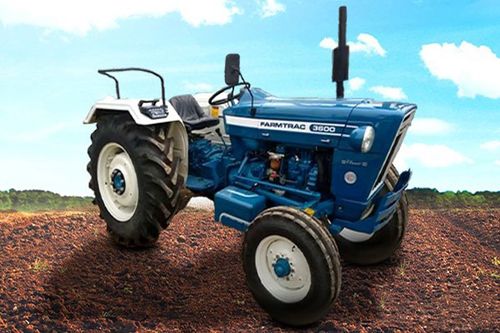Ad
Ad
From Beans to Brews: India's Top 10 Coffee-Producing States
In this article, we delve into the top 10 largest coffee-producing states in India, exploring their coffee traditions, cultivation techniques, and economic significance.

India, a land of diverse landscapes and cultures, is not only renowned for its tea plantations but also for its thriving coffee industry. The aroma of freshly brewed coffee wafts through the air, particularly in the top coffee-producing states. From the mist-covered hills of the Western Ghats to the plateaus of the South, these states play a pivotal role in India's coffee cultivation.
The coffee industry in India has grown dramatically, with some states contributing significantly to production. From Karnataka, India's largest coffee-producing state, to growing coffee regions in the northeastern states, each state has distinct traits that influence the flavours of coffee beans.
Regions' different weather conditions and great biodiversity contribute to the uniqueness of Indian coffee. As coffee's popularity grows around the world, it's fascinating to observe the expansion and evolution of India's coffee sector, which showcases the country's rich agricultural legacy.
India's coffee business has the potential to be a major contributor to the country's economy. With the correct assistance, the industry has the potential to expand and employ millions of people.
In this article, we delve into the top 10 largest coffee-producing states in India, exploring their coffee traditions, cultivation techniques, and economic significance.
Top 10 Largest Coffee-Producing States in India
1. Karnataka: The Coffee Capital
Leading the coffee brigade is Karnataka, often referred to as the "Coffee Capital of India." The state boasts an ideal climate and altitude for coffee cultivation, primarily within the regions of Hassan, Kodagu, and Tumkur. The Arabica and Robusta varieties thrive here, contributing significantly to India's coffee production.
Also Read: Top 5 Mahindra Yuvo Tractor Models in India
2. Kerala: Where Coffee Meets Spice
Kerala's picturesque landscapes aren't just about backwaters and palm-fringed beaches. The Wayanad and Idukki districts of Kerala also produce substantial amounts of coffee. The synergy between coffee cultivation and spice plantations has given rise to unique agroforestry practices, making Kerala a distinctive coffee producer. Arabica and Robusta varieties thrive here.
It is India's second-largest coffee producer, contributing to more than 20% of total production.
3. Tamil Nadu: Rising Coffee Star
While often overshadowed by its southern counterparts, Tamil Nadu is emerging as a notable coffee-producing state. The Nilgiri Hills are home to coffee plantations that benefit from the region's high elevations and cooler temperatures, resulting in high-quality coffee beans.
Tamil Nadu is India's third largest coffee producer, accounting for more than 5% of total production. Coffee growing has a long history in the state, extending back to the 18th century.
Coimbatore, Coorg, and Dindigul are the primary coffee-producing districts in Tamil Nadu.
4. Andhra Pradesh: Coffee Amidst Eastern Charms
The lush Eastern Ghats in Andhra Pradesh shelter coffee plantations that contribute significantly to the state's economy. The Araku Valley region is gaining recognition for its organic coffee cultivation methods, combining traditional wisdom with modern techniques.
Kadapa, Kurnool, and Chittoor are the primary coffee-producing districts in Andhra Pradesh.
5. Odisha: Brewing Growth
Odisha, known for its rich cultural heritage, is making its mark in the coffee industry. The Koraput district, nestled in the Eastern Ghats, has been witnessing a surge in coffee production.
The government's support and local initiatives have led to sustainable coffee practices in this region. It accounts for more than 2% of overall production in the country. The climate in the state is ideal for coffee cultivation, with temperate, moist summers and warm, dry winters.
Odisha's tribal-dominated regions of Koraput and Araku have become significant coffee-growing areas. Ganjan and Rayagada are the other coffee-producing districts in Odisha.
6. Assam: Beyond Tea
Beyond its world-famous tea, Assam is also venturing into coffee production. The state's unique climate and soil conditions provide a conducive environment for growing coffee. Though in its nascent stage, coffee farming in Assam holds promise for the future.
7. Manipur: Awakening Coffee
The Northeastern state of Manipur has been gradually venturing into coffee cultivation. The hills and valleys of the region offer suitable conditions for growing coffee, and local farmers are adopting this crop to enhance their livelihoods.
8. Maharashtra: Diversifying Agriculture
In the Chandrapur district of Maharashtra, coffee is gaining prominence as a diversification crop. The region's volcanic soil and moderate climate create a favorable setting for coffee plants to thrive. As farmers explore alternative options, coffee is adding a new dimension to Maharashtra's agriculture.
9. Nagaland: The Coffee Awakening
Nagaland, another jewel in the Northeast, has been embracing coffee cultivation in recent years. With government initiatives and local enthusiasm, coffee is becoming a catalyst for rural development and economic growth in the state.
10. Meghalaya: Cultivating in Clouds
Rounding off our list is Meghalaya, where coffee is cultivated in the clouds. The state's unique agro-climatic conditions make it suitable for growing high-quality Arabica beans. Coffee is not just a crop here but also a means to promote sustainable practices.
How to Harvest Coffee Beans?
Harvesting coffee beans is a meticulous process that requires attention to detail and careful handling to ensure the production of high-quality beans. Coffee is one of the world's most popular beverages, and its flavor and aroma greatly depend on the proper harvesting of the beans. The process involves several key steps to achieve optimal results.
Timing and Ripeness
Coffee cherries do not ripen uniformly on the tree. Skilled coffee farmers closely monitor the cherries' color changes, often ranging from green to red or deep purple, to determine their ripeness. Selective picking ensures that only fully ripe cherries are harvested, as they yield beans with the best flavor profiles.
Picking Methods
There are two primary methods for harvesting coffee beans: selective picking and strip picking. Selective picking involves harvesting individual ripe cherries by hand, which requires multiple passes through the coffee plantation as the cherries ripen at different times.
Strip picking, on the other hand, involves stripping all the cherries off a branch at once, which can be more efficient but might include both ripe and unripe cherries.
Manual Harvesting
Selective picking requires a skilled workforce, as pickers need to identify and pick only the ripe cherries. This method is labor-intensive but ensures the highest quality beans. It is common in specialty coffee production where quality is prioritized over quantity.
Mechanical Harvesting
In larger coffee plantations, mechanical harvesting is sometimes employed, especially for Arabica coffee. This method involves machines that shake the coffee trees, causing the cherries to fall onto a collection surface. While it can be more efficient, there is a risk of collecting unripe or overripe cherries, which can affect the flavor of the beans.
Processing
After harvesting, the coffee cherries need to be processed promptly to prevent deterioration. There are two main processing methods: the dry process and the wet process.
In the dry process, the cherries are laid out in the sun to dry, and the beans are later extracted. In the wet process, the cherries are pulped to remove the outer layers before the beans are fermented and washed.
Drying
Once the beans are separated from the cherry, they need to be dried to a specific moisture content to prevent moulding during storage. This is often done on raised beds, where the beans are spread out in a thin layer and turned regularly.
Hulling and Sorting
After the drying process, the outer husk of the bean needs to be removed. This is done through hulling machines. The beans are then sorted to remove any defects or impurities that could impact the final cup quality.
Final Processing
The beans are now ready for export or further processing, depending on the market's demands. They might be roasted locally or sent to speciality roasters around the world.
In conclusion, harvesting coffee beans is an intricate process that significantly influences the flavor and quality of the final product. The timing of the harvest, the method used, and the care taken during processing all contribute to the nuances in taste and aroma that coffee enthusiasts cherish.
Whether through manual labor or mechanized techniques, the goal remains the same: to bring out the best characteristics of the coffee bean and deliver a satisfying cup of coffee to consumers worldwide.
Also Read: Top 05 Farmtrac Tractors For Farming
Conclusion
From the rolling hills of Karnataka to the misty valleys of Meghalaya, coffee is leaving its aromatic mark across India's diverse terrains. The top 10 largest coffee-producing states showcase the country's ability to adapt its agricultural practices to varying climatic conditions.
These states not only contribute significantly to India's coffee production but also play a pivotal role in the socio-economic development of their regions. As the coffee industry continues to evolve, these states are likely to remain at the forefront of India's journey in the global coffee market, crafting a legacy as rich and flavorful as the beans they cultivate.
Features & Articles
Top 5 Swaraj Tractors for Indian Farmers in 2025
Explore the top 5 Swaraj tractors in India, offering power, durability, and performance for every type of Indian farmer....
02-Jun-25 10:06 AM
Read Full NewsThinking of Buying a Second Hand Tractor? Read These Top 10 Important Tips
Explore key tips to inspect the engine, tyres, brakes, and more before buying a second hand tractor in India....
14-Apr-25 08:54 AM
Read Full NewsComprehensive Guide to Tractor Transmission System: Types, Functions, and Future Innovations
Learn about tractor transmission types, components, functions, and selection factors to enhance efficiency, performance, and agricultural productivity....
12-Mar-25 09:14 AM
Read Full NewsModern Tractors and Precision Farming: Transforming Agriculture for Sustainability
Precision farming enhances agriculture by integrating GPS, AI, and modern tractors for sustainable, efficient, and productive farming practices in India....
05-Feb-25 11:57 AM
Read Full NewsTop 10 Tractors Under 30 HP in India 2025: Guide
Top 10 tractors under 30 HP in India offer efficiency, affordability, and power, ideal for small farms with diverse agricultural needs....
03-Feb-25 01:17 PM
Read Full NewsNew Holland 3630 TX Super Plus vs Farmtrac 60 PowerMaxx: Detailed Comparison
Compare New Holland 3630 and Farmtrac 60 tractors by specs, price, and features to find the perfect fit for your farm....
15-Jan-25 12:23 PM
Read Full NewsAd
Ad
As featured on:


Registered Office Address
Delente Technologies Pvt. Ltd.
M3M Cosmopolitan, 12th Cosmopolitan,
Golf Course Ext Rd, Sector 66, Gurugram, Haryana
pincode - 122002




















